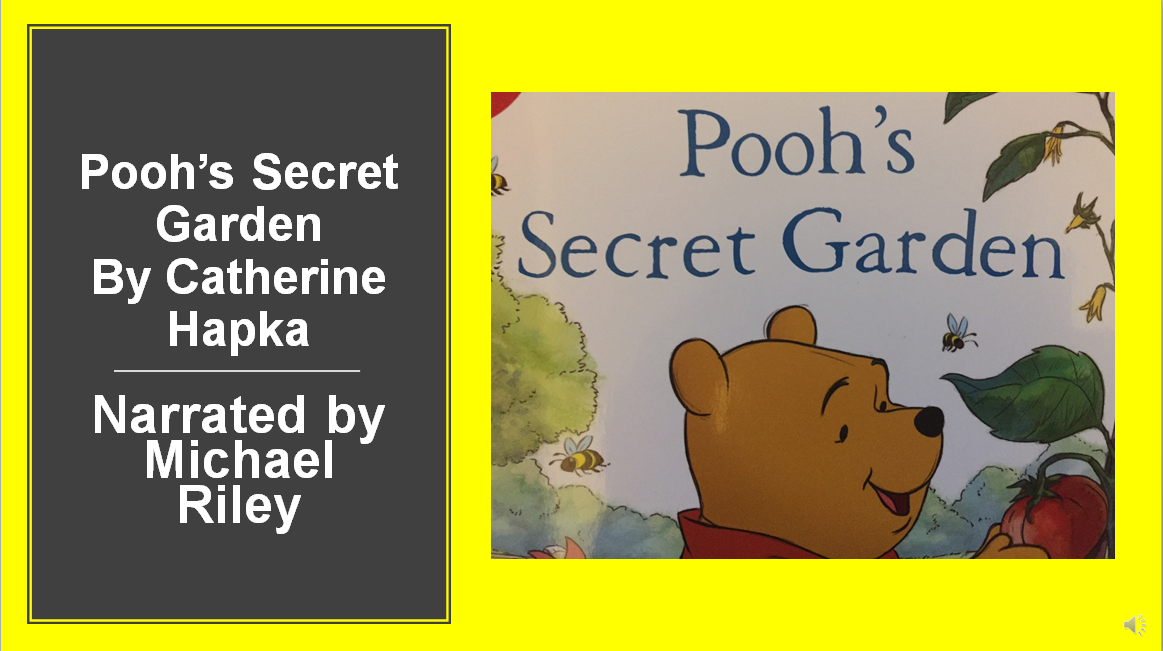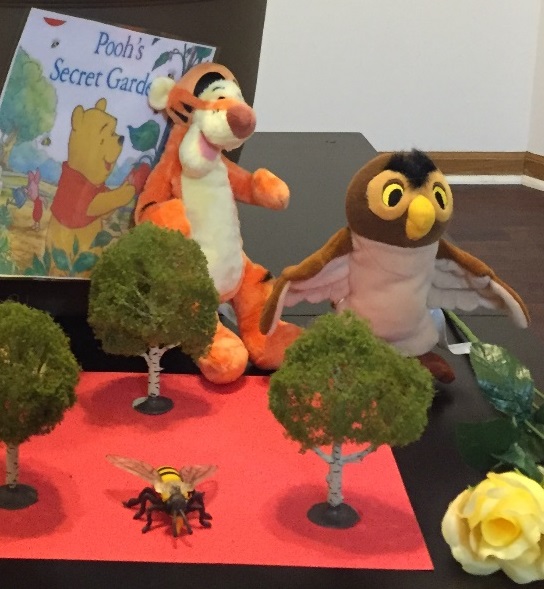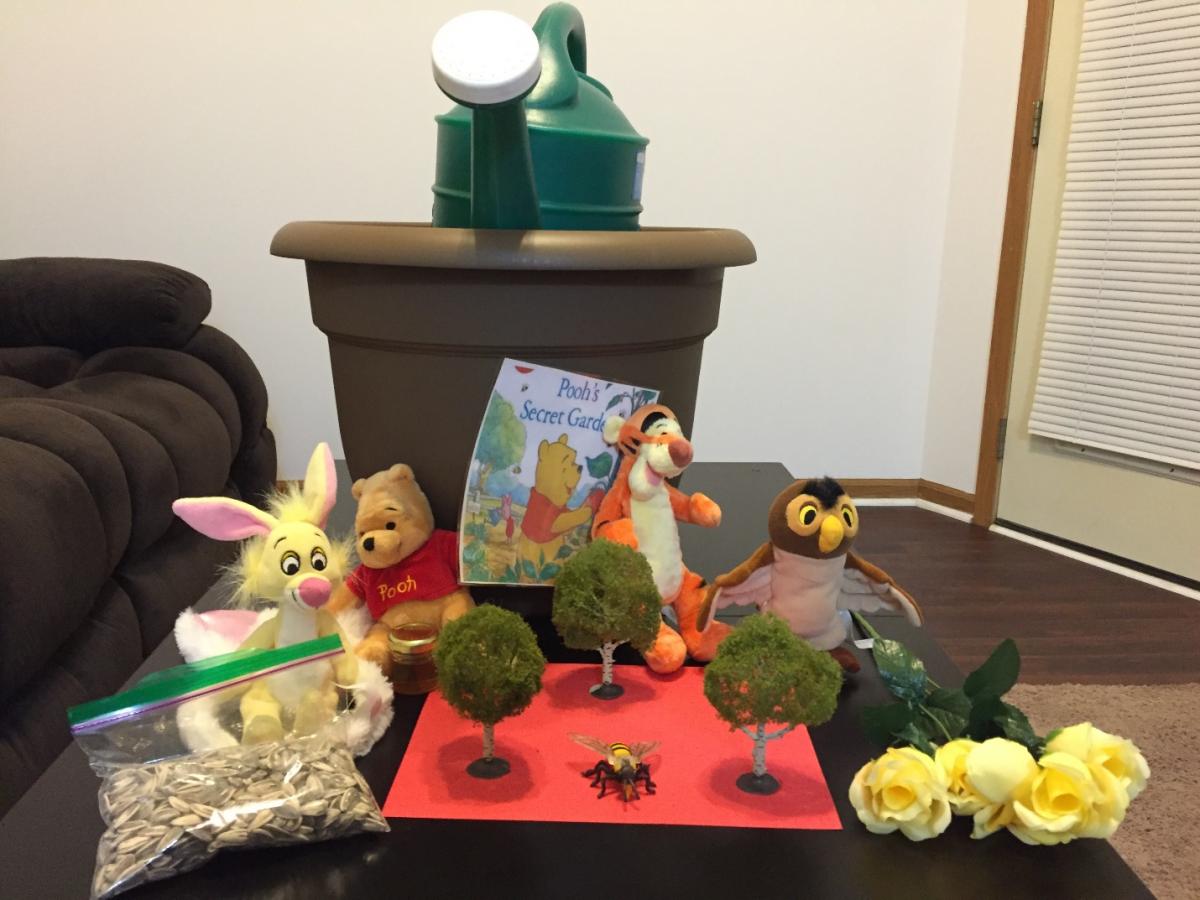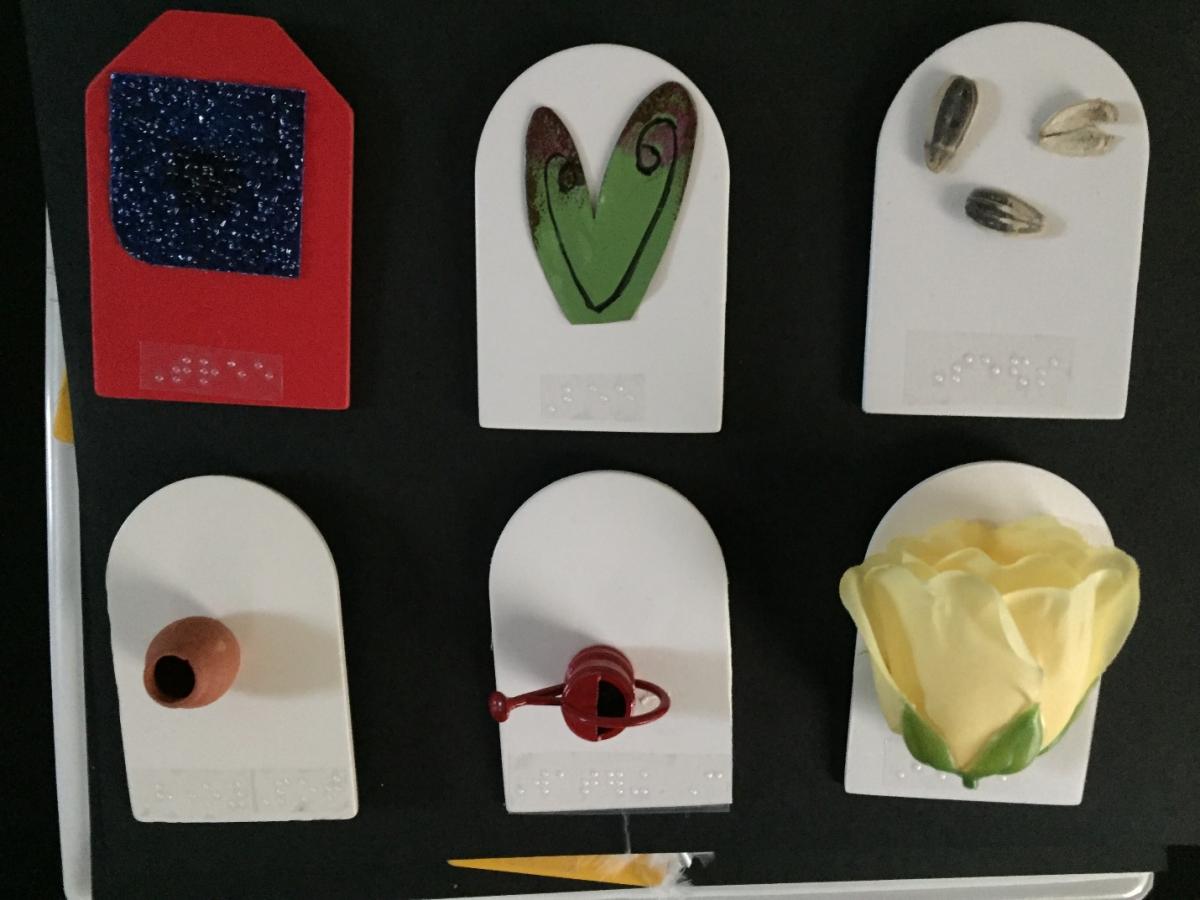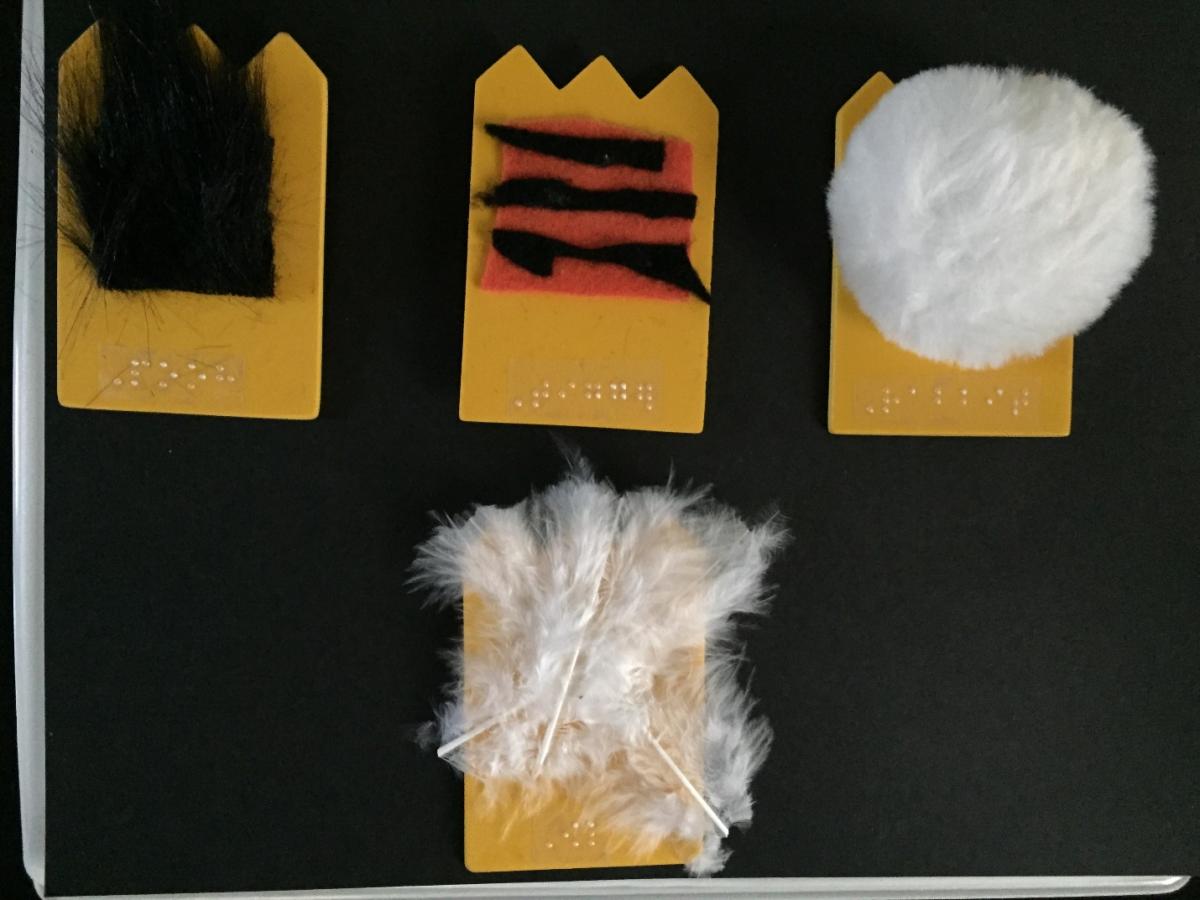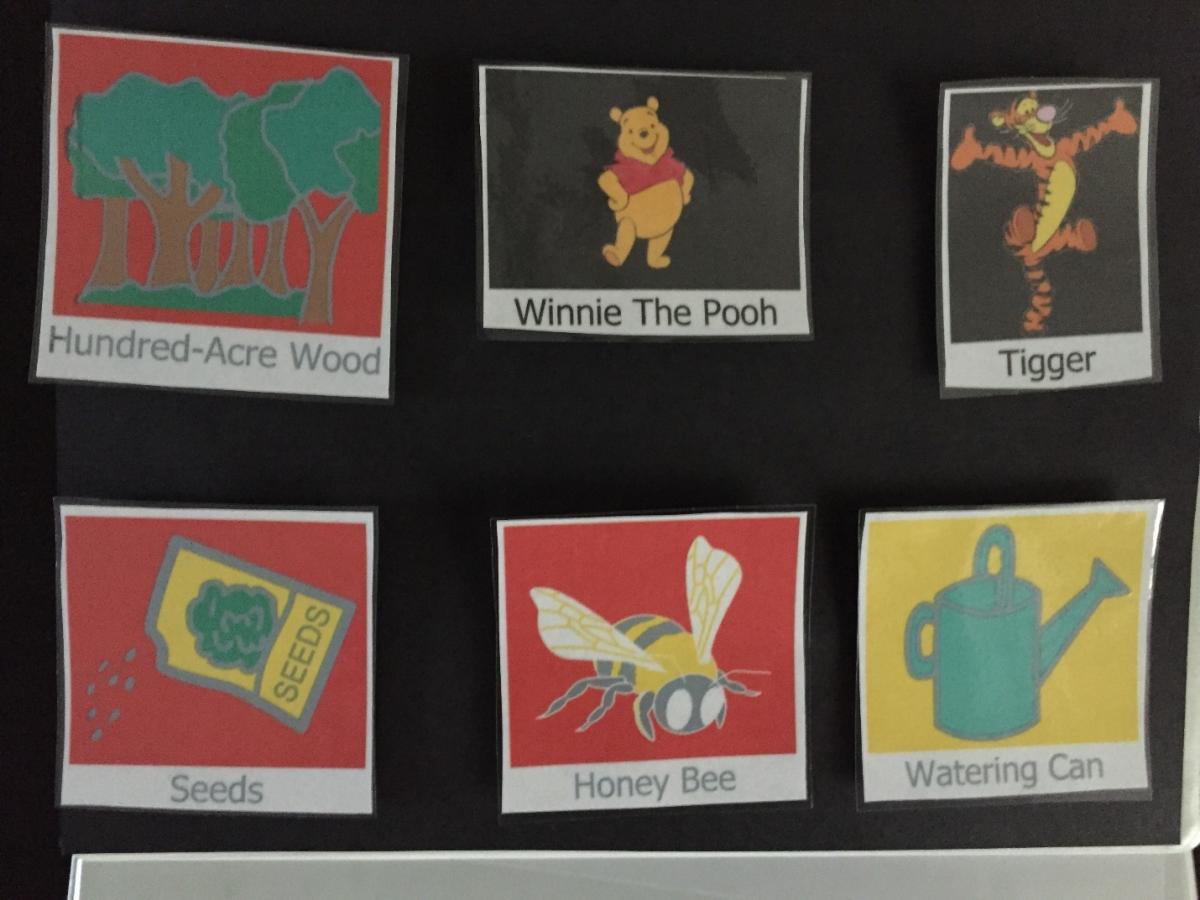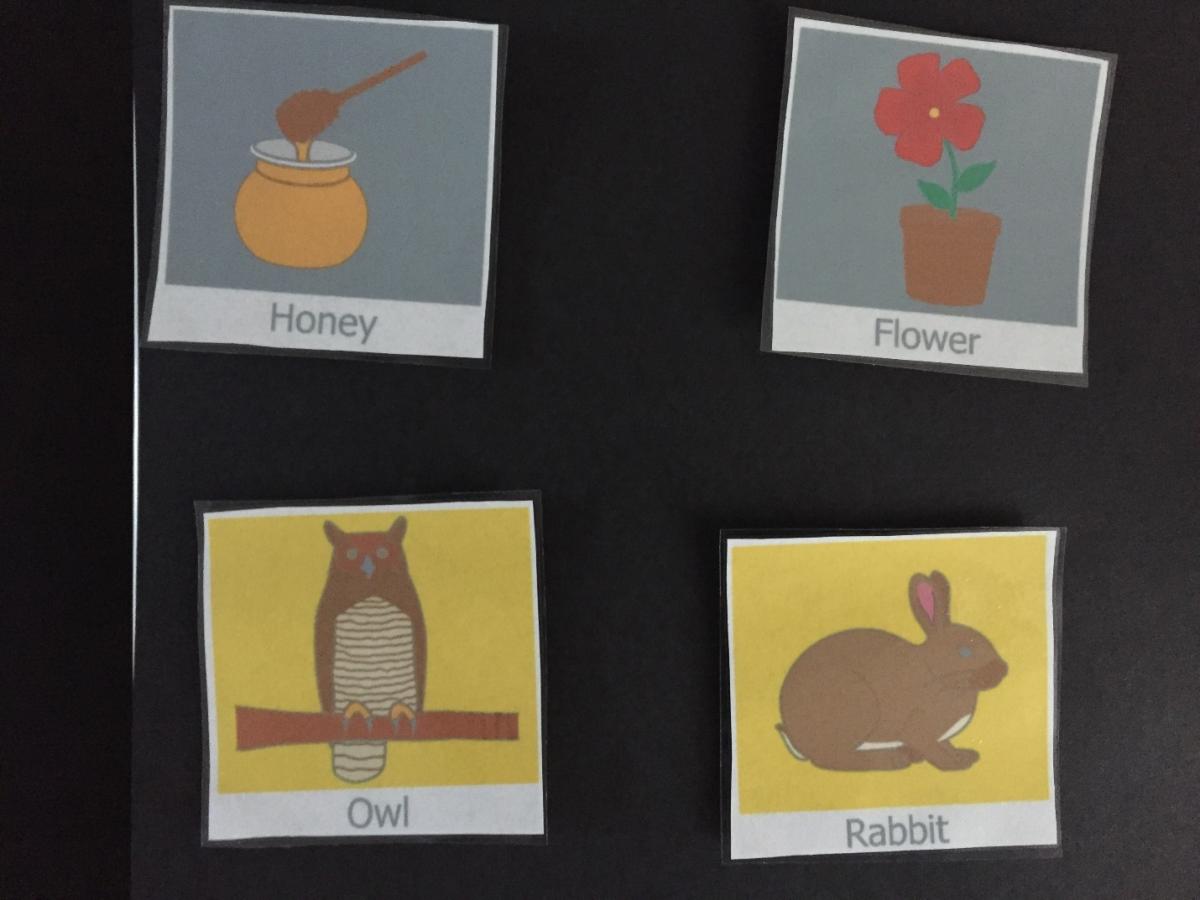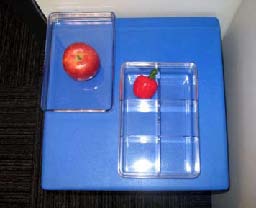As part of the graduate coursework for Visual Impairments and Multiple Disabilities in the Teacher Preparation Program in Visual Impairments at the University of Kentucky, students were asked to complete four projects: Story Box, Picture Communication Symbols for Story Box, Tactile Communication Symbols, and Talking Book Project.
We are sharing them on Paths to Literacy and hope that others will use them! Please add your comments at the bottom of the page. This project is based on Pooh’s Secret Garden by Catherine Hapka.
One of my students, a third grader with multiple disabilities, including CVI, was the inspiration behind my choice of Pooh’s Secret Garden. I learned within the first week of getting to know him back in late August that he loved Tigger. During Labor Day weekend, I bought this book for him. It’s a lift-the-flap book, and I thought the flaps would help him focus on tracking of specific characters or objects on the page. This is a great book to use with students who are visually impaired or have multiple disabilities due to its P-K reading level, the flaps that open to reveal characters or other story elements that a student can better focus on, and the large print.
Story Box
The book made a great story box because it contained many elements within it that tangible objects already exist for. Furthermore, the objects could be used to expand upon concept development that goes beyond literacy.
I wanted my ‘box’ to be light, durable, and able to store the bulk of my tangible items. I also wanted it to fit into the story’s theme somehow, so I went with a light, plastic flower pot. The items I chose to place in the story box were plush figures of Pooh, Rabbit, Owl, and Tigger, a bag of sunflower seeds, a bouquet of faux flowers, a small glass jar containing honey, a tree diorama to represent the Hundred-Acre Wood, a plastic bee figure, and a plastic watering can.
This story box could be implemented to teach several concepts, the first of which is using the objects to teach the concept of nouns. The only caveat to this, however, is the fact that you can only teach two of the three noun-types as there are no people in the story. The objects in the box could also be used while the story is being read to emphasize certain literary concepts. The plush figures are the characters, the diorama is the setting, and the other items all contribute to the plot structure. Furthermore, the items themselves could serve as a tool to assess kids who are nonverbal by offering the items as choices and asking them to select one. The four plush figures could be used to teach the physical features of bears, rabbits, big cats, and birds. You could also replace the bag of sunflower seeds with packets of flower seeds, provide each of your students a mini flower pot filled with soil, and incorporate a lesson on growing plants.
Tactile Symbols
The tactile cards I developed were designed to further emphasize the concepts introduced by the story box items. This activity could be used with students who are blind as well as students with multiple disabilities. One card served as a setting, five as objects, and four as characters. The red setting card is labeled tree but serves more as a stand in for the Hundred Acre Woods where the story takes place. I glued a square of textured paper to indicate the roughness associated with the bark of a tree. The five object cards are a set of wings for bee, sunflower seeds for seeds, a faux flower bud for flower, a small clay model for honey pot, and a small metallic model for watering can. The clay model pot may also contain a bit of glue or honey to indicate the concept of stickiness while the watering can model can teach about metal surfaces. The four character cards are a patch of animal fur for Pooh, a bunny tail for Rabbit, feathers for owl, and a patch of orange felt with three black felt stripes glued on to represent Tigger.
In addition to the background knowledge a student would need to have to fully take part in the story box activity, a student using the tactile cards would need pre-knowledge on different textures as well as the concepts of wood and metal surfaces. They would also need to know certain physical features of animals. My intent as to using the tactile cards with students would be to further expand upon concepts related to the story box items that weren’t covered previously.
Ten questions that could be answered using the tactile cards are:
- Which object is made of metal? (Watering Can)
- Which character has black stripes? (Tigger)
- Which character has feathers? (Owl)
- Which character has fur? (Pooh)
- Which character has a short, soft tail? (Rabbit)
- Which object feels sticky? (Honey Pot)
- What other creature besides Owl has wings? (Bee)
- What grows all over the Hundred Acre Wood? (Trees)
- What do bees need to make honey? (Flower)
- What do you plant in the ground to grow things? (Seeds)
Picture Symbols
For my picture communication symbols, I decided to make the symbols out of the tangible objects used in the story box. I wanted the symbols themselves to tie in with the tangible objects in the box and not come off as a separate entity. The symbols themselves include Pooh, Rabbit, Owl, Tigger, seeds, honey, watering can, Hundred-Acre Woods, flower, and honey bee. For Pooh and Tigger, since both are such highly recognizable characters, I simply found an image of the two and placed them against a black background. I used symbols for a real owl and rabbit for those two characters, and each were placed on a yellow background. I wanted to emphasize that rabbits and owls are real animals while Pooh and Tigger are simply based on real animals. I found a symbol for a green watering can, which looks exactly like the one in the story box. It was placed against a yellow background as well. A symbol for a flower pot containing a flower and a jar of honey were both placed against a black background. I used a red background to highlight the symbols I used for seeds, honey bee, and the Hundred-Acre Woods.
Ten questions that could be answered using the symbol cards are:
- Where does Pooh’s Secret Garden take place? (Hundred Acre Wood)
- Who wanted to grow the secret garden? (Pooh)
- Who told Pooh how to grow the garden? (Owl)
- What did Owl say Pooh needed to grow the garden? (Seeds)
- Who gave Pooh the seeds? (Rabbit)
- Who discovered the perfect spot for a garden? (Tigger)
- Pooh wanted to grow a garden to obtain what? (Honey)
- What do bees need to make honey? (Flowers)
- What was lying under the watering can? (Honey Bees)
- What was in the old stump at the end of the story? (Honey Bees, Honey)
Talking Book
Because of copyright law, we are unable to share the link to this.
